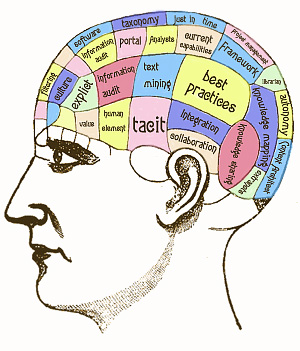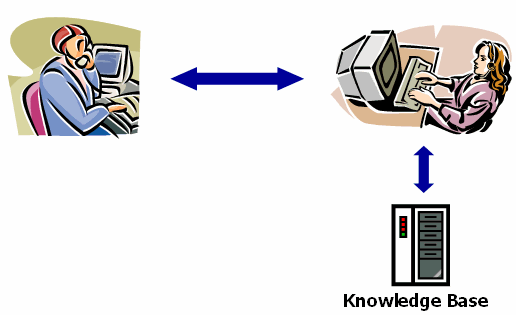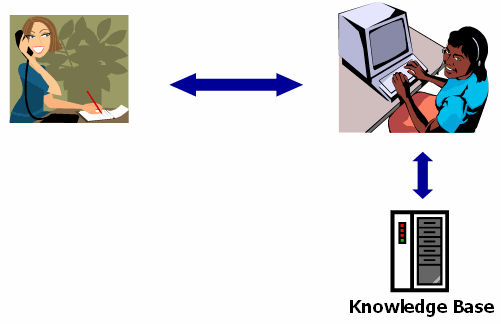Main menu
You are here
How knowledge management works
How knowledge management works

Knowledge management is not just about technology, but technology can be used to enable knowledge management processes and practices. A Knowledge Management System (KMS) is an example of using technology to help an organization be more efficient and successful in their knowledge management efforts. The following is an example of a Knowledge Management System in use at a call center like the ITS Help Desk. On a daily basis, the ITS Help Desk interacts with the University community by
telephone, e-mail, and in person concerning problems or questions with technology on campus. Using a Knowledge Management System, when a customer calls, e-mails, or visits the Help Desk with a problem or a question, the Help Desk agent searches the knowledge base for previous instances of the same problem or question. At this point, one of two scenarios are possible.
- If the problem has arisen in the past and was documented in the knowledge base, the Help Desk agent can reuse the knowledge and efficiently answer the question or resolve the customer’s problem.
- If the problem or question has not been documented in the knowledge base, the agent can research the problem, answer the customer's question, and then document the solution in the knowledge base.
Later on, if a customer calls with the same or a similar problem or question, the Help Desk agent who answers the call can use the search engine to find the information in the knowledge base and efficiently answer the customers question.
Eventually, when a knowledge base has matured, it can be made available to customers directly so that they can find answers to questions on their own in a self-service manner.




